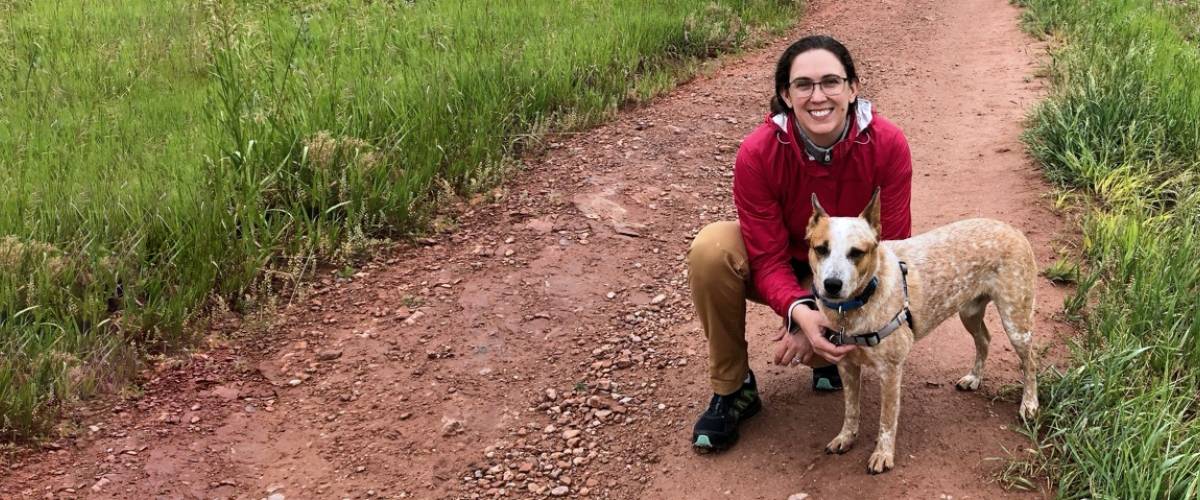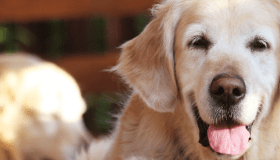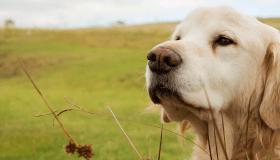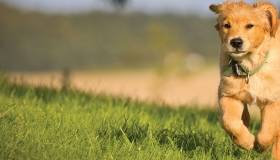
February 13, 2020 – A life-long lover of animals and self-professed science geek, Dr. Cat Cowan recently joined the Golden Retriever Lifetime Study team as the second pathology resident who’ll support the project by providing additional support in examining the huge number of tissue samples collected from Study participants.
Like so many veterinarians, Cat knew early on that she wanted to do something to help animals and she was fascinated by the ecosystems where animals were born, lived their lives and died.
“I spent my summers living with my dad on an island off the upper peninsula of Michigan,” said Dr. Cowan. “I ran around barefoot, played in the river, caught snakes, frogs and other creatures and played in the garden. It made me appreciate wildlife and ecosystems and solidified my interest in animals, but in the context of interactions and environment.”
Cat’s interests took a slight turn when she got a job in a research lab as an undergraduate at the University of Virginia. After putting in time doing the clean-up jobs in the lab, the graduate and postdoctoral students gave Cat a small project of her own. She enjoyed the research and started to reconsider whether she wanted to go to graduate school or veterinary school. A stroke of luck pointed her toward a combined DVM/PhD program and ultimately to Colorado State University and the Golden Retriever Lifetime Study.
Cat spent time in a human cancer research laboratory and was impressed with how the human pathologist who collaborated with the lab was the important bridge between their bench research and clinical disease. She can be a similar role in the Golden Retriever Lifetime Study.
“I was really excited by the powerful database and how I think it will let us connect the dots between disease and other factors,” said Cat. “My primary goal is to contribute as much as I can to the collection of data from the pathology side. I think this pathology piece is so important for creating understanding of biological systems. I also hope to be on the front lines of starting to ask some questions of this dataset as a writer, analyst and collaborator.”




